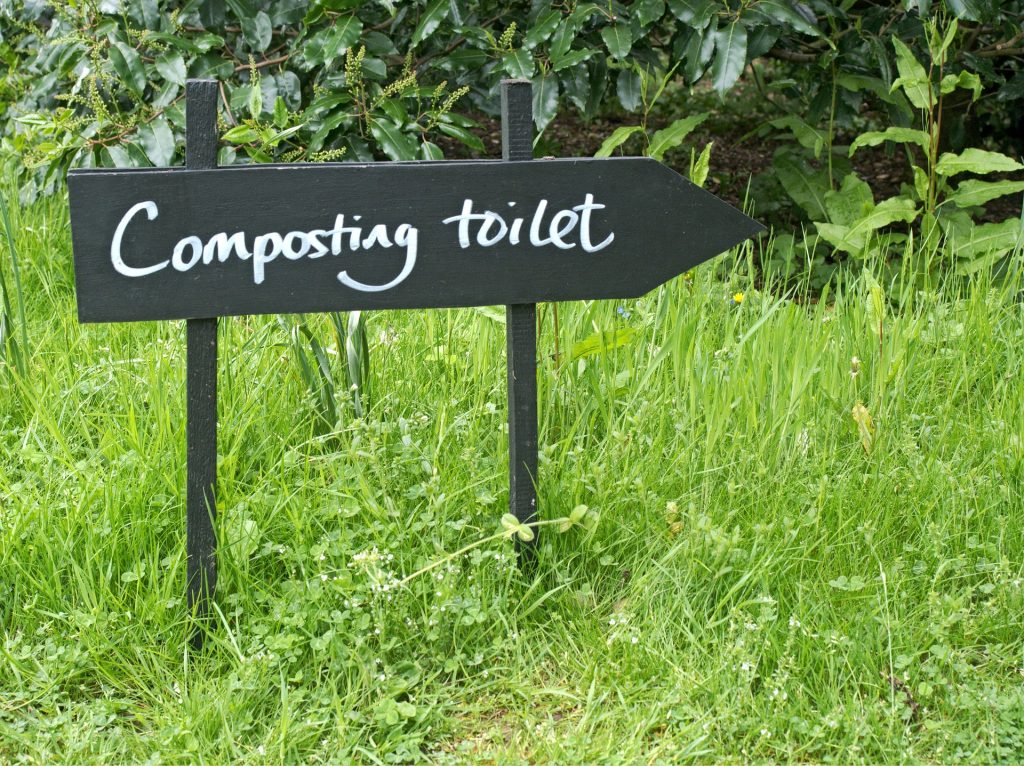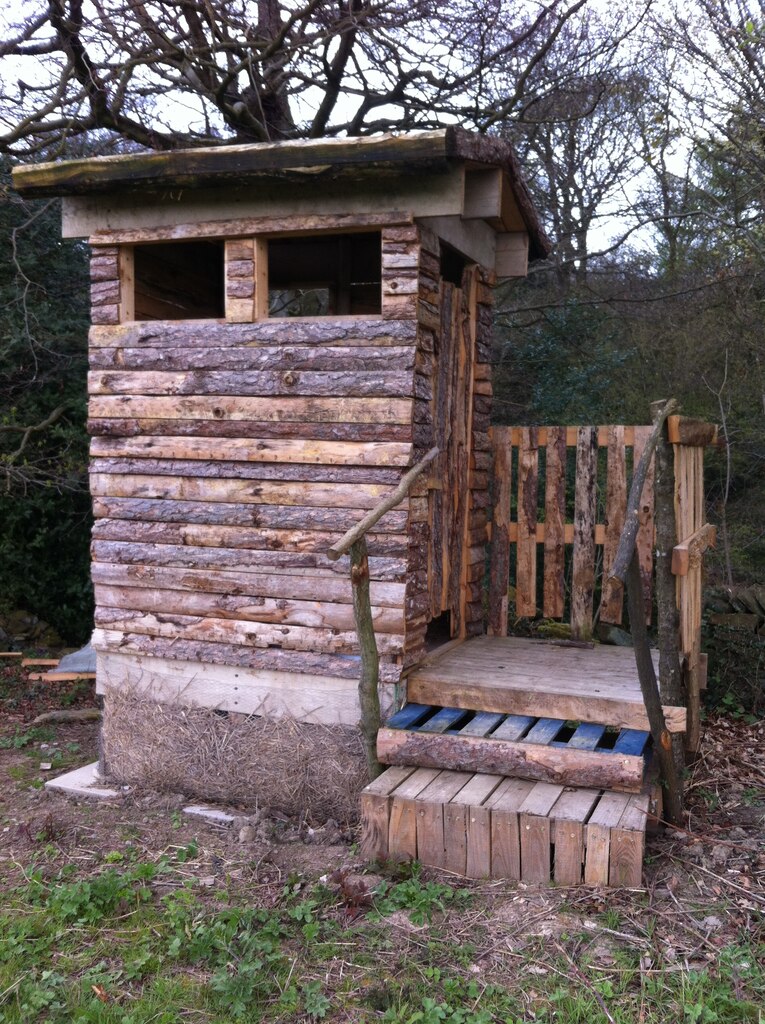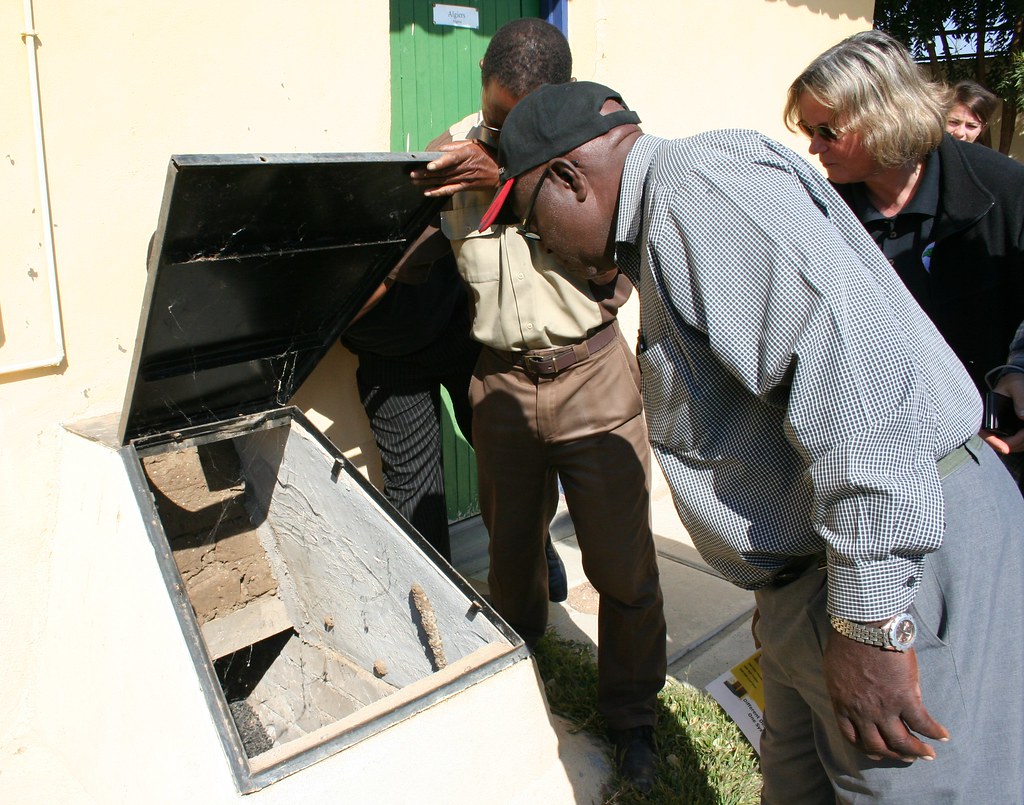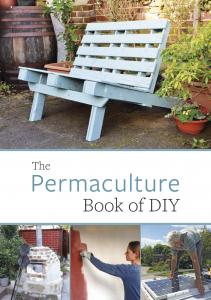
Embracing composting toilets is a pivotal step towards sustainable living in modern households. As the world becomes increasingly aware of our environmental impact, more households are seeking eco-friendly home improvements. Central to this movement is the humble toilet, often overlooked but incredibly important.
Composting toilets offer a sustainable, environmentally friendly alternative, reducing water usage and waste production. This article will delve into what these toilets are, how they operate, and why they might be the next step in your journey towards a greener home.
What is a Composting Toilet?
A composting toilet is a system that processes human waste through organic decomposition and evaporation. Instead of flushing waste away with water, it transforms it into valuable compost. This is achieved without chemical agents and instead harnesses natural decomposition processes. Unlike the toilets most are familiar with, which rely heavily on water and sewage or septic systems, composting toilets work on the principle of making waste into an asset and use virtually no water in the process.
There are various types of composting toilets, each catering to different needs. Some are designed for high-traffic areas while others are better suited for remote locations, supporting those living off the grid. We’ll explore these types in more depth in the sections to follow.
Why Choose a Composting Toilet? The Road to Sustainable Living
Transitioning to this kind of system might seem like a leap. Still, the benefits, both environmental and economic, make it an option worth considering for those dedicated to self-sustained living and conserving our planet’s resources.
The Green Side: Environmental Benefits
- Water Conservation: The most striking advantage is the significant reduction in water usage. Traditional toilets historically used between 3.5 to 7 gallons of water per flush. However, recent advancements have allowed toilets to use 1.28 gallons per flush or less. Still, even with these advancements, the cumulative water usage can be substantial for a single household over the course of a year.
In contrast, composting toilets use little to no water, making for effective water conservation at home, especially over time.
- Reduced Strain on Sewage Systems: With the elimination of flushing, composting toilets also reduce the volume of effluent entering sewage systems. This not only minimizes the risk of sewage overflows but also means less energy and fewer resources are required to treat wastewater.
- Valuable Compost Production: A well-maintained composting toilet produces nutrient-rich compost that can be used to improve the soil in your garden. This compost is a boon for gardeners, converting waste into a resource and contributing to a circular economy.
Pocket-Friendly: Economic Advantages
- Reduced Water Bills: A direct consequence of installing a composting toilet is a noticeable reduction in monthly water bills. For households, especially in areas where water rates are high, the savings can be substantial over time.
- Sewage Infrastructure Costs: For areas without existing sewage infrastructure, the installation of traditional plumbing systems can be expensive. Opting for composting toilets eliminates the need for such setups, presenting an economical solution, especially for new constructions.
Remote Living: Suitability for Off-Grid Locations
- Self-sufficiency: Composting toilets are an embodiment of self-sustained living. They don’t rely on external sewage systems, making them perfect for locations where such amenities are lacking or hard to establish.
- Ideal for Cabins and Tiny Houses: Cabins nestled in remote areas or tiny houses on the move often don’t have access to traditional sewage systems. Composting toilets offer a feasible and practical solution, providing sanitation without the need for complex plumbing.
- Off-Grid Living: Water and waste management can be significant challenges for those looking to live off the grid. Composting toilets offer a solution, turning waste into a resource while minimizing water usage, making them indispensable for off-grid lifestyles.
Are There Drawbacks to Composting Toilets?
While composting toilets present numerous advantages, just as any home improvement or change, transitioning to composting toilets can come with its own set of considerations.
Maintenance Commitment: Beyond the Flush

Composting toilets require a different kind of attention than their water-based counterparts. Many types necessitate frequent checks, ensuring the composting process works optimally. Emptying the compost can be a regular chore, especially with self-contained systems that have a smaller capacity. Beyond this, after each use, there’s often the need to add carbon materials, such as sawdust, to facilitate the composting process and manage odor. This maintenance is a departure from the simple flush system many are accustomed to.
Evaluating Initial Costs: An Investment in Sustainability
Composting toilets can have a higher upfront cost compared to standard toilets. A unit suitable for a single full-time user can range between $1,000 and $1,500, while those designed for larger households can fall between $4,000 and $10,000. For homeowners with a knack for DIY, creating a system on their own can significantly reduce costs. It’s worth noting that these do-it-yourself systems often come under more stringent scrutiny during the permitting process, however.
In comparison, conventional toilets can cost between $200 –$400, but they come with the added expense of water bills for their entire lifespan. When comparing the initial costs of a composting toilet with the potential long-term savings, the economics make sense. In fact, studies indicate that a composting toilet can pay for itself in less than two years, making it not only an environmentally conscious choice but also a financially sound one.
Space: The Roomier, The Better?
There’s no one-size-fits-all with composting toilets. Some systems, especially central composting systems, require more space than others. This can pose challenges for homes with limited space or those looking to retrofit existing bathrooms. Selecting the right type based on available space is crucial to ensure a seamless integration and efficient operation.
A New Paradigm: The Learning Curve
Change often comes with a learning phase, and composting toilets are no exception. Shifting from the familiar flush-and-forget toilet to a system that requires a bit more hands-on interaction can be an adjustment. There might be moments of trial and error as users get acquainted with the nuances of their new toilet system. But with time and practice, it becomes second nature, much like any other home activity.
How Do Composting Toilets Work?
After understanding the basics of composting toilets, one might wonder about the inner workings of these eco-friendly systems. So, let’s delve into the science and components that make these toilets not just functional, but also sustainable.
The Science Behind the Process
Understanding the functioning of composting toilets begins with appreciating the biological breakdown of waste. Human waste, when treated correctly, undergoes aerobic decomposition, facilitated by microbes. These tiny organisms work tirelessly to break down the waste, producing compost as the end product. But for this process to be both efficient and safe, certain conditions need to be met.
Temperature plays a pivotal role in the composting process. High temperatures, specifically reaching at least 131°F (55°C), are essential for a span of several days to ensure the elimination of harmful pathogens from the waste. Achieving this temperature might necessitate direct sunlight or, in certain advanced systems, electrical elements to heat up the composting chamber.
The size of a compost pile plays a major role in its ability to reach and maintain high temperatures. The principle is simple: larger volumes retain heat more effectively than smaller ones due to their increased mass.
For compost piles to become thermophilic and reach temperatures that effectively kill pathogens, they need to have a certain critical mass. A minimum volume of 1 cubic yard (3 feet x 3 feet x 3 feet) is often recommended. This size ensures that the pile has sufficient mass to hold the heat generated by microbial activity, particularly in the pile’s core. Within this environment, temperatures can soar to 160°F (70°C) or even higher, exterminating most pathogens, weed seeds, and pests.
When emptying small toilets, however, the content added to the compost pile might be added intermittently and in smaller quantities. The sporadic addition might struggle to achieve the desired thermophilic conditions if added to a small or cold pile. Therefore, even for small toilet systems, ensuring that the compost pile has achieved the aforementioned critical mass becomes essential.
Regular additions of toilet material can benefit from an already active and hot composting system, ensuring rapid integration and breakdown of fresh additions. In contrast, large systems with compost storage operate differently. These systems often deal with a more consistent and larger influx of organic matter, and their piles can be much larger than those for small toilets. While they inherently have the advantage of size, these larger piles present their own challenges.
For instance, their sheer volume can lead to compaction, which might reduce airflow, an essential component for aerobic decomposition. Reduced airflow can subsequently lower the temperature of the compost pile, making it less effective at breaking down organic matter and eradicating pathogens.
To combat these challenges in larger systems, regular turning or aeration of the compost is vital. This reintroduces air into the system, reignites microbial activity, and raises the pile’s temperature. Some large-scale composting operations even employ machinery to turn and aerate their piles, ensuring that the compost remains at optimal temperatures for decomposition.

Components of a Composting Toilet
- Separation Mechanism: One of the unique features of composting toilets is their ability to separate liquid from solid waste. This division accelerates the composting process, reduces potential odors, and simplifies maintenance. Liquid waste is typically diverted to a separate container or evaporated, while solid waste is directed to the composting chamber.
- Composting Materials: The use of specific materials aids in breaking down solid waste. Among the popular choices are peat moss, coco coir, and sawdust. While peat moss is an effective absorber, coco coir and sawdust are more sustainable options. Of these, sawdust stands out as the most eco-friendly choice, especially when sourced locally from sawmills as a repurposed waste product.
- Ventilation: To maintain an odor-free environment and aid the decomposition process, effective ventilation is paramount. Ventilation mechanisms in composting toilets help evaporate excess moisture and introduce fresh air, creating an aerobic environment ideal for decomposition. This ensures that the system remains free from unpleasant odors, typically associated with decomposition in anaerobic (absence of air) conditions.
- Mixing and Aeration: Another crucial component is the ability to mix and aerate the waste. This is usually achieved through rotating mechanisms inside the toilet. Regular mixing ensures even decomposition, exposes all waste to beneficial microbes, and assists in achieving the needed temperatures.
Types of Composting Toilets: Picking the Right Fit for You
After understanding the science and components behind composting toilets, the next step is to explore the available types. Your choice will often hinge on space considerations, maintenance preferences, and the desired system’s reach.
Self-Contained Systems: Compact and Convenient
The hallmark of a self-contained system is its compact design, making it an ideal choice for smaller spaces such as tiny homes, cabins, or those embracing the off-grid lifestyle. These systems integrate all composting processes within the toilet unit itself. This design simplicity, however, comes at the cost of more frequent maintenance. Regular checking and emptying become essential tasks for those opting for this system, ensuring the unit functions optimally and remains odor-free.
Central Composting Systems: Broadening the Horizon
Unlike the self-contained versions, central composting systems are more extensive setups. These systems are designed to cater to a larger scale, providing flexibility and efficiency. Central composting toilets are further sub-divided based on their setup and functioning:
Standard Central Systems: Serving Multiple Needs
The main characteristic of standard central systems is their ability to serve multiple toilets. This is especially useful for larger homes or establishments that require multiple restroom facilities. Their design allows for the placement of the composting unit in spaces adjacent to the restroom, like utility rooms, or even in separate outdoor areas, ensuring a streamlined waste management process.
Basement Tanks: Leveraging Gravity
For homes with basements, gravity can be an ally. Basement tank systems use gravity-aided composting, where waste travels downwards into a tank placed in the basement. The consistent, controlled environment of a basement offers an added advantage, ensuring a steady breakdown process. It simplifies maintenance as all waste is centralized, and the natural process of decomposition is accelerated due to the stable conditions.
Installation of Composting Toilets: A Step-By-Step Guide
Transitioning to composting toilets requires proper installation to ensure functionality and longevity. This process can seem daunting, but with some guidance, homeowners can effectively integrate these systems into their homes.
Preparing the Site
Before diving into installation, assessing the space where the toilet will reside is a crucial step. Measure the area to ensure it can accommodate the chosen system. An often overlooked but vital aspect is ensuring proper ventilation. Adequate airflow not only supports the composting process but also helps in odor management. Drainage is another important factor, especially for systems that separate liquid from solid waste. Before moving forward, it’s wise to consult an expert or detailed instructional manual for your specific model to identify ventilation and drainage needs.
Step-by-Step Composting Toilet Installation Guide
Installing a Self-Contained System
A self-contained composting toilet system is compact and usually suitable for smaller spaces. Their design typically combines the composting chamber and the toilet seat in one unit. To install:
- Choose a suitable location: Consider proximity to sleeping or living areas, as well as accessibility for maintenance.
- Ensure a flat, stable surface: This ensures the unit sits securely and operates effectively.
- Set up ventilation: Most self-contained systems come with a vent pipe that needs to be directed outside. This helps in keeping the system odor-free.
- Connect any electrical components if present: Some models come with fans or heaters to aid in the composting process.
Central Composting System Installation
Central composting systems separate the composting unit from the toilet. The waste is transported to the composting unit, usually located beneath the bathroom or in a separate space.
- Position the composting unit below the bathroom floor or in another space like a utility room.
- Install the toilet seat in the desired location.
- Connect the chute or pipe from the toilet to the composting unit.
- Ensure proper ventilation, directing any odors outside and promoting effective composting.
- Set up any additional components like fans or mixers as per the manufacturer’s guidelines.
Basement Tank System Implementation
Basement tank systems use gravity to assist in the composting process. The waste drops into a tank positioned in the basement or a space below the toilet.
- Install the composting tank in the basement or below-floor space, ensuring it’s secure and accessible.
- Position the toilet above, directly aligned with the tank.
- Connect the two with a chute or drop pipe.
- Make sure the vent pipe is routed outside.
- Depending on the model, there might be a need for electrical connections for components like fans, mixers, or heaters. Follow the manufacturer’s guidelines closely.

Maintenance Tips
Proper maintenance is crucial to keep your composting toilet functioning optimally. Like any system, neglecting its needs can lead to inefficiencies, malfunctions, and even health hazards. Whether you are a homeowner living off the grid or someone simply passionate about eco-friendly home improvements, understanding the maintenance requirements can make your composting toilet journey smoother.
Rotating and Mixing
One of the primary tasks you’ll encounter is the need to rotate or mix the composting materials. Most systems come equipped with handles that allow users to stir the contents. This activity helps distribute moisture and heat and speeds up the composting process. Regularly turning the contents also ensures even decomposition and minimizes any potential for odor.
Emptying the System
The frequency of emptying your composting toilet depends mainly on its capacity and usage. Smaller, self-contained systems may need attention more frequently than larger central systems. As a general guideline, keep an eye on the level of the compost. When it reaches two-thirds of the container, it’s typically time to empty it. An overflow is something to avoid as it can compromise the entire composting process.
Keeping Things Fresh
One of the common concerns people have is, “Do composting toilets smell?” With proper maintenance, the answer is a resounding no. Ensuring an odor-free operation largely depends on maintaining the right balance of materials and moisture in the system. Ventilation mechanisms built into most models also play a pivotal role in whisking away unwanted odors. Make sure the vents remain unblocked and clean for efficient odor control.
Check the Moisture Level
A composting toilet’s effectiveness hinges on the moisture content inside the system. Too wet, and the decomposition process slows down. Too dry, and the waste won’t break down as needed. Regularly check the moisture levels and, if necessary, add bulking agents like sawdust or coco coir to absorb excess moisture or a bit of water if it’s too dry.
Inspect Ventilation Systems
A well-ventilated composting toilet ensures that odors don’t accumulate inside your living space. Periodically inspect the ventilation fans and ducts for any obstructions or dust build-up. Clean and clear them to guarantee a seamless airflow.
Monitor Temperature
The decomposition process relies heavily on thermophilic bacteria that thrive at 131°F (55°C) and above. If the compost is too cold, these microbes can’t function effectively. Especially in colder climates or seasons, consider insulating your system or using a heater to maintain a conducive temperature.
Use the Right Additives
While not always essential, certain additives can boost the composting process. Depending on your system’s recommendations, consider adding microbial starters or natural enzymes to help break down waste faster. By integrating these maintenance tips into your routine, your composting toilet will remain an efficient, eco-friendly, and odor-free alternative to traditional systems. The rewards of water conservation and waste reduction far outweigh the initial learning curve, making these toilets an excellent choice for those keen on sustainable living.
Frequently Asked Questions
Making informed decisions about composting toilets involves addressing some frequently asked questions. This section seeks to shed light on these queries to help potential users feel more comfortable with their choices.
How Often Do I Need to Empty a Composting Toilet?
The frequency of emptying a composting toilet varies depending on several factors. The model and design of the toilet, the number of users, and the balance between solid and liquid waste can all impact this. For instance, a self-contained system in a small household may require more frequent maintenance than a central system serving multiple users. Regular monitoring will provide a better understanding of the specific needs of your toilet.
Can I Use Regular Toilet Paper?
Yes, you can use regular toilet paper with composting toilets. Opting for those that break down easily facilitates the composting process, however. Biodegradable toilet paper or paper that’s single-ply typically works best. You could also explore alternatives like recycled toilet paper to align with your eco-friendly objectives.
Is the Compost Safe for All Plants?
Once fully composted, the end product is usually safe for ornamental plants. When considering the application of edible plants, however, caution should be exercised. It’s advisable to use compost from human waste only for non-edible plants to avoid potential health risks. If you’re determined to use it in your vegetable garden, ensure that the compost has thoroughly decomposed for at least a year and consult guidelines on safe usage.

What If There’s a Strong Odor?
An efficiently working composting toilet should not emit strong odors. If unpleasant smells arise, it might indicate an imbalance in the composting process. This could be due to excess moisture, inadequate ventilation, or insufficient carbon materials. Regularly checking the balance of the compost, ensuring proper ventilation, and adding carbon-rich materials like sawdust can help rectify such issues.
Do Composting Toilets Attract Insects?
In a well-maintained system, the presence of insects should be minimal. However, if you notice an influx of flies or other pests, it could be an indicator of too much moisture or an uncovered waste. Regularly stirring the compost and ensuring that waste is adequately covered with carbon materials can keep unwanted critters at bay.
Are NSF-Approved Composting Toilets Better?
NSF-approved composting toilets meet certain standards and criteria set by the National Sanitation Foundation. While approval ensures the system meets specific requirements, it doesn’t necessarily mean non-NSF toilets are inferior. It’s always wise to conduct thorough research and reviews before making a decision.
Can I Live Off the Grid with a Composting Toilet?
Absolutely. Composting toilets are an ideal solution for those interested in living off the grid. They reduce dependency on traditional sewage systems and water supplies, making them perfect for remote locations or self-sustained living. Whether you’re in a cabin in the woods or a mobile home traveling the country, these toilets can significantly enhance your eco-friendly, off-grid experience.
In Closing: The Green Alternative
Composting toilets stand out as a promising solution for individuals passionate about sustainable living and eco-friendly home improvements. Their core principle is simple: transforming waste into something usable, conserving water, and reducing strain on our planet’s resources. Beyond the eco-friendliness, these toilets offer economic advantages, from water bill savings to decreased expenses on sewage infrastructure.
And for those who cherish the idea of living off the grid or residing in remote locations, composting toilets become a practical necessity. Yet, choosing a composting toilet isn’t just about embracing the latest sustainable trend or saving some money on utilities. It’s about fostering a mindset that prioritizes the environment and our responsibility to it.
The benefits they offer, from water conservation to producing useful compost, make them worth considering for every household. If you’re contemplating ways to make your home greener or to lead a more self-sustained life, giving serious thought to composting toilets might be the step forward you need.
Additional Resources—Coming Soon
For those intrigued by the possibilities of composting toilets and eager to delve deeper into the subject, a myriad of resources await. From comprehensive books that elucidate the science behind the process to courses that guide homeowners through the installation and maintenance journey, the quest for knowledge does not end here.
We’re in the process of curating a list of valuable resources, ensuring readers have a reliable guidepost to navigate their journey towards a more sustainable living.
Reviews and Recommendations—Coming Soon
There’s immense value in the experiences of others. While our in-depth reviews and recommendations section is in the works, remember that user feedback and expert advice can provide invaluable insights. From minor quirks to significant issues, these reviews can paint a clearer picture of what to expect from a particular composting toilet model.



